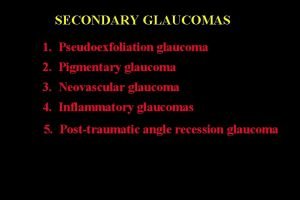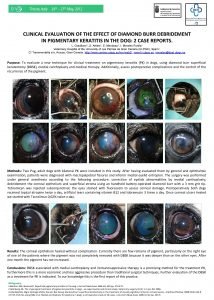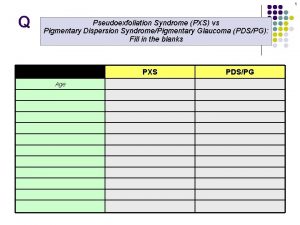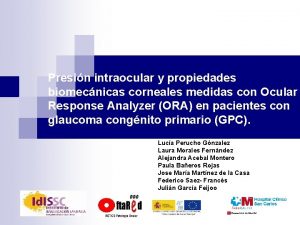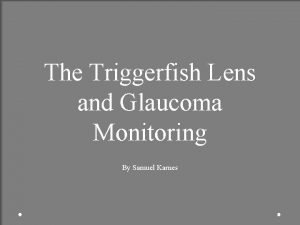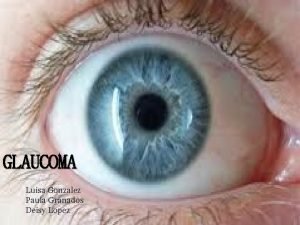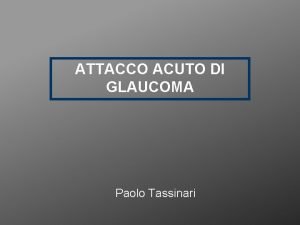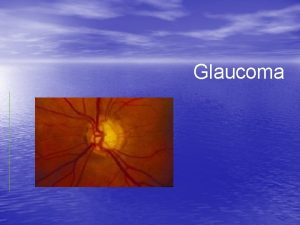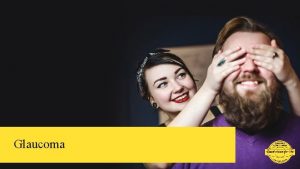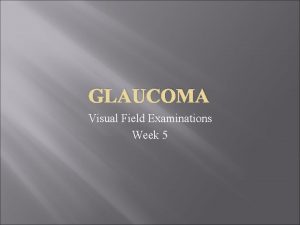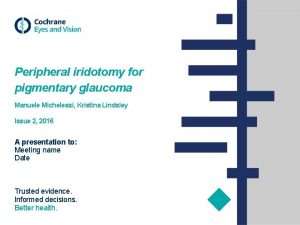SECONDARY GLAUCOMAS 1 Pseudoexfoliation glaucoma 2 Pigmentary glaucoma









- Slides: 9

SECONDARY GLAUCOMAS 1. Pseudoexfoliation glaucoma 2. Pigmentary glaucoma 3. Neovascular glaucoma 4. Inflammatory glaucomas 5. Post-traumatic angle recession glaucoma

Pseudoexfoliation glaucoma • • • Secondary trabecular block open-angle glaucoma Affects elderly, unilateral in 60% Prognosis less good than in POAG Pseudoexfoliative material Central disc with peripheral band Iris sphincter atrophy On retroillumination Gonioscopy Trabecular hyperpigmentation - may extend anteriorly (Sampaolesi line)

Pigmentary glaucoma • • • Bilateral trabecular block open-angle glaucoma Typically affects young myopic males Increased incidence of lattice degeneration Krukenberg spindle and very deep anterior chamber Mid-peripheral iris atrophy Fine pigment granules on anterior iris surface Trabecular hyperpigmentation

Causes of neovascular glaucoma • Common, secondary angle-closure glaucoma without pupil block • Caused by rubeosis iridis associated with chronic, diffuse retinal ischaemia Ischaemic central retinal vein occlusion (most common) Central retinal artery occlusion (uncommon) Long-standing diabetes (common) Carotid obstructive disease (uncommon)

Signs of advanced neovascular glaucoma Severe rubeosis iridis Severely reduced visual acuity, congestion and pain Distortion of pupil and ectropion uveae Synechial angle closure

Treatment options of neovascular glaucoma Topical Atropine and steroids to decrease inflammation • Beta-bockers • Panretinal photocoagulation - in early cases Artificial filtering devices - in very advanced cases Cyclodestructive procedures - to relieve pain Retrobulbar alcohol injection - to relieve pain

Inflammatory glaucomas Angle-closure with pupil block • Caused by seclusio pupillae • Anterior chamber is shallow

Inflammatory glaucomas Angle-closure without pupil block Caused by progressive synechial angle closure • Anterior chamber is deep •

Post-traumatic angle recession glaucoma Pathogenesis Blunt traumatic damage to trabecular meshwork Signs Irregular widening of ciliary body band
